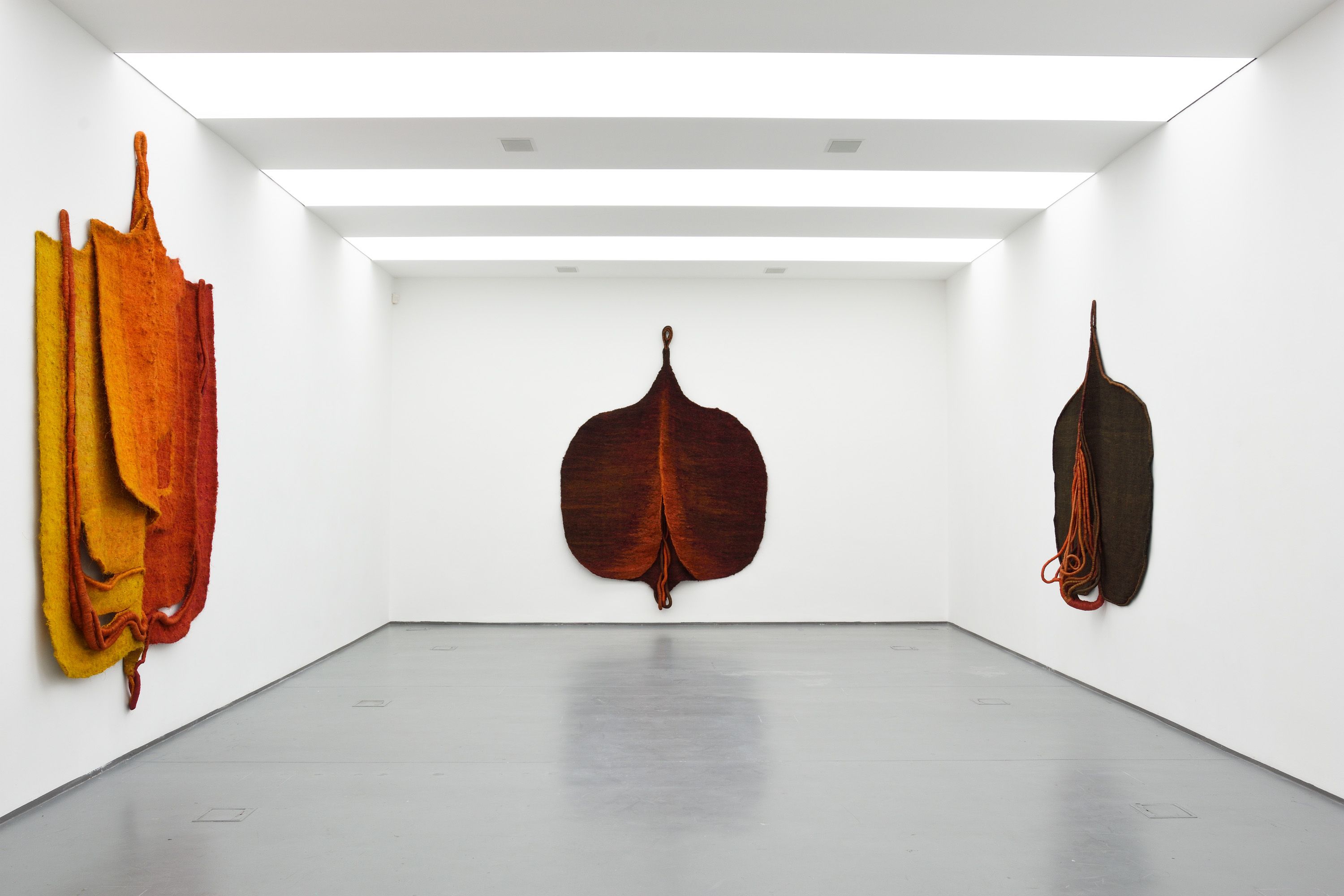Klara Kuchta
Fibre Works 1968-1973
| Venue: | acb Gallery |
| Date: | Apr 23 – May 24, 2019 |
Description
acb Gallery proudly presents fibre works realized between 1968 and 1973 by Klára Kuchta and reunited for the first time after their exhibition in Geneva in 1975. The raw material used by Klára Kuchta (1941) in these pieces is the cord twisted from the vegetal fibres of the sisal agave.
The works realized with sisal cords retrace the path that the artist has made between two-dimensional and three-dimensional thinking within her first, coherent artistic period. Exploring the technical potentials of sisal, Kuchta aims to examine space and volume, an investigation that joined the post-WWII international tendencies of abstraction in which fibre art occupied a central position.
Klára Kuchta studied at the textile department of the University of Applied Arts in Budapest between 1963 and 1968. After her graduation in 1968, the plasticity and three-dimensional potential of the sisal, the vegetal fibre she used for her large-format hangings or mural woven pieces, became central to her visual investigations. Kuchta took an active part in the formal renewal of textile art in the late sixties in Hungary, which allowed the medium to outgrow its traditionally decorative reception, its recurrent use as a tool for artistic propaganda, and to become a channel of abstract artistic expression that silently opposed the socialist realistic style propagated and favoured by the Hungarian aesthetical ideologies. Following her move to Geneva, Switzerland in 1971, she gained international recognition at the Biennale de la Tapisserie de Lausanne where she exhibited along with Denise Emery, Magdalena Abakanowicz and Jagoda Buić.
While her early works realized in 1968-1969 already avoid any formal reference and combine textures, materials, gradient fields but still evoke ancient tribal tapestries, her weavings realized in the beginning of the 1970s – many of which were destroyed and lost – approach the surface with an organic sensuality that references Hungarian art historian Ernő Kállai’s bioromantic theory closely intertwining abstract art with microcosmic and macrocosmic views of the universe, therefore art and science. In the works she realized later such as Source (1971-1972), Red Composition (1973) and Brown Composition (1973), the artist experiments with the possibilities of shaping fibre in space and the plasticity of sisal in order to emphasize their organic characteristics. The direct formal analogies with the female body and its private parts also open the way for interpreting these pieces from a feminist perspective.
The outcome of this period of experiments with fibre let Klára Kuchta to free the works from their usually hanging mode of presentation, their relation with the vertical wall as well as from their decorative function. Her series entitled Habitable Environment developed in 1972-1973 and composed of smaller objects as well as – unfortunately lost – human-scale units were conceptualizing the idea of mobile spaces for living and natural shelters. They also acted as a conceptual programme for the following years and as catalysts of a new period: Klára Kuchta’s practice took a conceptual turn in 1974 when she formulated her socio-economic Art Manifesto and initiated a ten-year cycle dedicated to the historical, cultural, gender-based, social and economic aspects of hair. Using it first as a raw material for woven pieces and paintings that marked the transition between her textile works and her conceptual period, Klára Kuchta gradually moved towards a socially critical approach of the hair through photo series, performances and video pieces, which also positioned her a pioneer of video art in Switzerland.
The exhibition of Klára Kuchta’s works also marks the start of a new long-term research project initiated by acb Gallery and acb ResearchLab; the project aims to (re)discover and shed light on those oeuvres of the Hungarian neo-avant-garde that did not receive proper professional attention and recognition in their time, currently with a focus on artists working with fibre and textile such as Margit Szilvitzky and Aranka Hübner beside Klára Kuchta.
The exhibiiton was supported by NKA.


